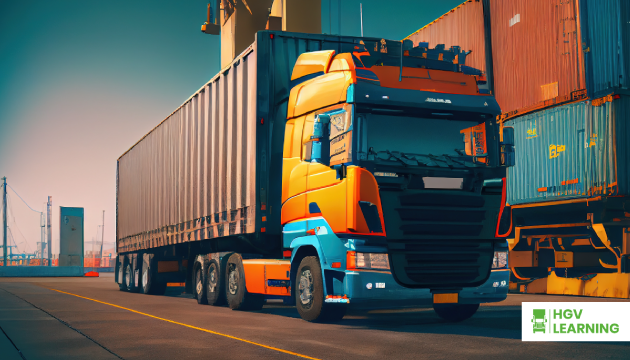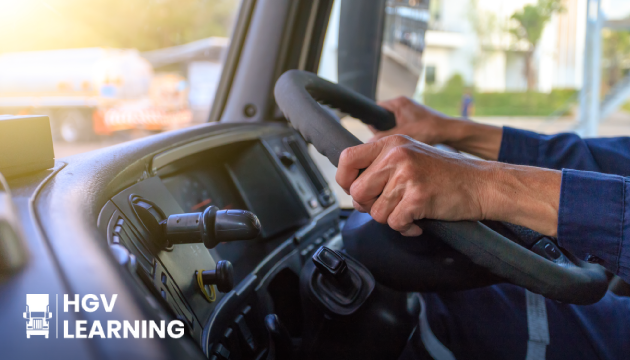Related Articles

28/10/2025
Preventing HGV Overloading: Legal Limits and On-the-Road Consequences

21/10/2025

Tachographs in HGV driving are a crucial part of ensuring safety, compliance, and fairness in the logistics industry. These devices record driving time, rest periods, and vehicle speed, helping both drivers and operators stay on the right side of the law. Whether you’re training to become an HGV driver or already working in the industry, understanding how tachographs work and why they matter is essential. In this post, we’ll explore how tachographs support driver welfare, prevent fatigue, and play a central role in fleet management.
A tachograph is a digital or analogue device installed in HGVs that monitors and records driving activities. The most common type today is the digital tachograph, which automatically logs information such as:
Time spent driving
Break and rest periods
Vehicle speed
Distance travelled
This data is essential for enforcing legal limits on working hours, reducing the risk of fatigue-related accidents, and maintaining fair working conditions across the sector.
In the UK, tachograph use is regulated by both UK domestic law and retained EU legislation. Drivers of vehicles over 3.5 tonnes used for commercial purposes must use a tachograph unless they fall under specific exemptions. The legislation is designed to:
Protect road safety
Ensure drivers get proper rest
Prevent unfair competition among haulage companies
Operators must retain tachograph data for at least 12 months, while drivers are responsible for carrying their driver card and ensuring the equipment is working correctly.
There are two main types of tachographs used in HGV driving:
These older devices use wax charts to manually record driving activity. They are being phased out but are still found in some older vehicles. Drivers must fill in the charts correctly and store them as required.
Now standard in modern fleets, digital tachographs store data on a driver’s card and the vehicle unit. They offer more accuracy, are harder to tamper with, and make data analysis much easier for operators and enforcement agencies.
If you are an HGV driver, you must:
Ensure your digital driver card is inserted at the start of your shift
Record any manual entries accurately (e.g. time spent on other work)
Take required breaks and rest periods
Notify your employer of any malfunction or loss of tachograph data
Failing to use tachographs correctly can result in fines, penalty points, or even loss of your operator’s licence. To stay compliant, consider renewing your Driver CPC regularly and keeping up to date with industry regulations.
Operators must ensure:
All vehicles are fitted with working tachographs
Data is downloaded regularly
Drivers are trained on proper use
Tachograph data is stored securely and analysed for compliance
Firms are subject to regular audits, and failure to comply can lead to sanctions from the DVSA, including heavy fines or prosecution.
One of the most important functions of tachographs in HGV driving is reducing fatigue. By enforcing legal limits on daily and weekly driving time, tachographs:
Help drivers maintain alertness
Reduce the risk of fatigue-related accidents
Support healthier work schedules
Driver fatigue remains one of the leading causes of road accidents involving heavy vehicles. With a properly functioning tachograph and compliance training, drivers can manage their time more effectively and reduce stress.
For employers, tachographs offer more than just compliance; they are a valuable fleet management tool. They allow operators to:
Monitor driver performance and fuel efficiency
Identify training needs
Detect unauthorised vehicle use
Schedule maintenance based on usage data
In this way, tachographs not only improve road safety but also enhance operational efficiency and cost-effectiveness for logistics companies.
Understanding how tachographs integrate with other digital fleet systems is becoming increasingly important in modern logistics. Many companies now pair tachograph data with telematics platforms that track vehicle diagnostics, fuel usage, route efficiency, and driver behaviour. This integration allows transport managers to gain a more comprehensive view of fleet performance, identify areas for cost savings, and make data-driven decisions about scheduling and driver support.
Smart tachographs also pave the way for real-time enforcement. In future, enforcement officers may not need to stop vehicles to check compliance. Remote access to tachograph data can allow roadside checks to happen digitally, reducing disruption to schedules while still maintaining strict oversight. For drivers, this means a higher level of accountability but also fewer unnecessary delays.
Additionally, understanding tachograph symbols and their correct usage is an area where many new drivers need guidance. Misinterpreting rest symbols or failing to log certain types of work, like loading or waiting time, can lead to errors that affect compliance. Regular training, whether through company refreshers or external providers like HGV Learning, helps reinforce correct use and reduces the chance of penalties.
Finally, promoting a culture of compliance within haulage companies can make a significant difference. When drivers feel supported, trained, and informed about tachograph responsibilities, they’re more likely to take ownership of accurate logging. This not only improves safety and legal adherence but also contributes to smoother operations and better industry standards overall.
If your digital driver card is not working, you must inform your employer and keep a manual record of your activities until the issue is resolved.
This is one of the most common errors and can result in missing data. Always double-check your tachograph before starting your shift.
Drivers should know how to enter breaks, rest, and other work manually when necessary. Failure to do so can lead to discrepancies in records.
To stay compliant, consider training refreshers or guidance from providers like HGV Learning that offer support at every stage of your career.
With the rise of smart tachographs, enforcement and compliance are set to become even more efficient. These next-generation devices include:
GPS positioning
Remote enforcement access
Enhanced security features
All new vehicles registered since 2019 are required to have smart tachographs installed. As technology evolves, it’s vital for drivers and operators to stay updated and adapt their practices accordingly.
Tachographs play a vital role in HGV driving by ensuring compliance, promoting safety, and supporting fair working conditions. Whether you’re just starting your HGV licence training or already on the road, understanding how tachographs work is essential to your career.
From tracking hours to preventing fatigue, these devices are more than just compliance tools, they help protect drivers, employers, and everyone else on the road. Make sure you’re confident with their use and stay informed about any updates in tachograph regulations or equipment.

28/10/2025

21/10/2025
Complete the form below and we’ll contact you asap.

